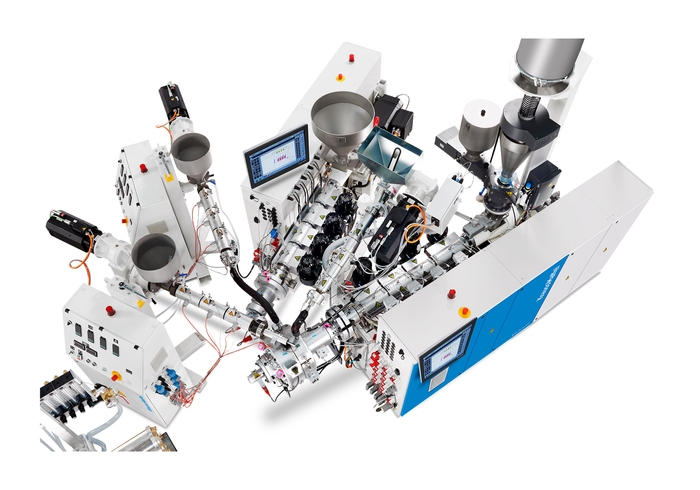KraussMaffei boosts Mexico’s agricultural industry with sustainable logistics solutions in packaging
Discover how KraussMaffei helped transform eco-friendly packaging in Mexico’s logistics sector—read the full case study now.
Welcome to Headland Technology Client log in
Whether you’re after a machine, spare part, power tool, or need to book a service call Headland will help you find the right solution in a timely manner.
Fill out the form below and the relevant expert will be in touch with you shortly.
Plastic extrusion is a manufacturing process that has revolutionised the manufacture of everyday items ranging from pipes and tubing to window frames. It is utilised across numerous industries, including packaging, construction, automotive, and more.
A plastic extrusion machine is a device that melts and shapes plastic materials into continuous profiles. The process involves feeding plastic pellets or granules into a heated barrel, where they are melted and mixed. The molten plastic is then forced through a die, which shapes the material into the desired profile. The extruded plastic is cooled, solidified, and cut to the required length.
Extruder: The extruder is the heart of the machine, consisting of a barrel, screw, and drive system. It melts and mixes the plastic material before pushing it through the die.
Die: The die is a custom-designed tool that shapes the molten plastic into the desired profile. Dies can be changed to create different shapes and sizes.
Cooling system: After extrusion, the hot plastic profile is cooled and solidified using a cooling system, such as water baths or air cooling.
Haul-off and cutting units: These units pull the extruded plastic profile and cut it into desired lengths for further processing or packaging.
The process starts with the preparation of raw materials, usually plastic resin pellets or granules. These pellets are often made from polymers like polyethylene (PE), polypropylene (PP), polystyrene (PS), or PVC (polyvinyl chloride).
Plastic extrusion offers several advantages, including high production rates, low cost per unit, and the ability to create complex shapes with consistent quality. Its versatility makes it a widely used manufacturing process across various industries.
If so, contact Headland Technology’s experts to leverage our specialised KraussMaffei extrusion machine solutions. We can guide you through the latest extrusion technology advancements.
Whether you’re after a machine, spare part, power tool, or need to book a service call Headland will help you find the right solution in a timely manner.
Fill out the form below and the relevant expert will be in touch with you shortly.
The 36D series’ twin-screw extruders that operate in parallel are made specifically for processing PVC. Their aim is to achieve maximum economic efficiency by means of optimal product quality and high output.
Process PVC or PO with KraussMaffei’s high-performance pipe extrusion machines. For sale in Australia and New Zealand.

